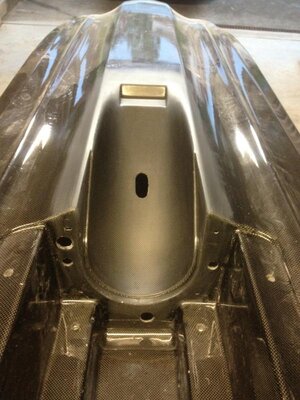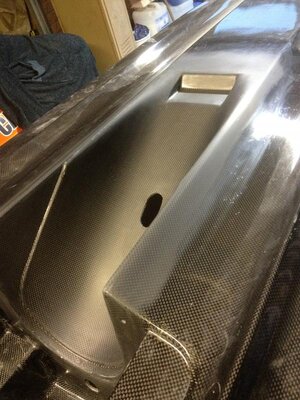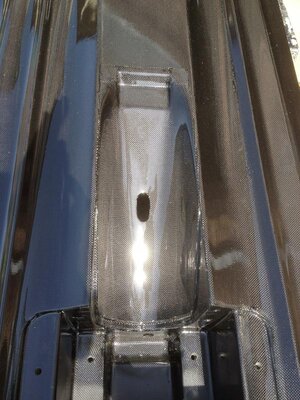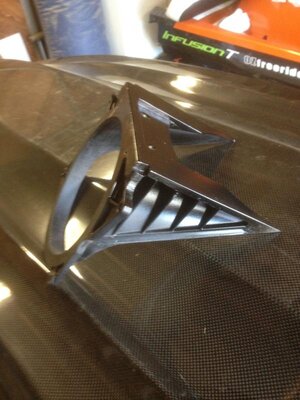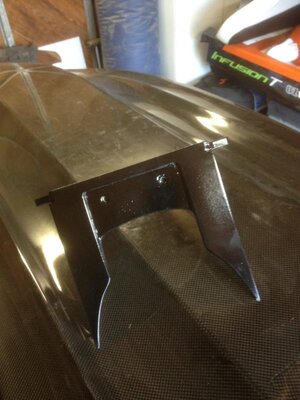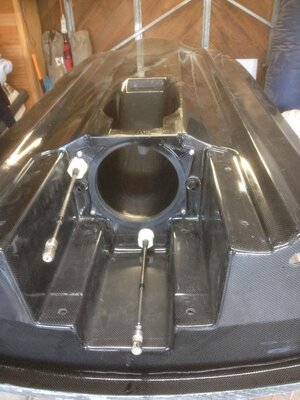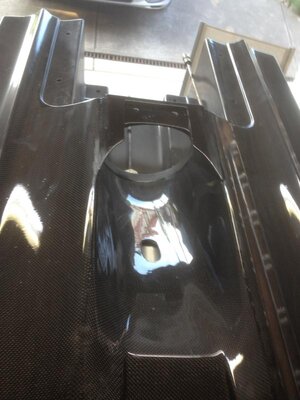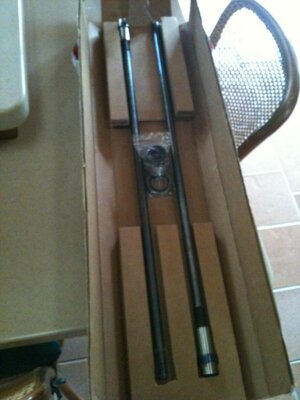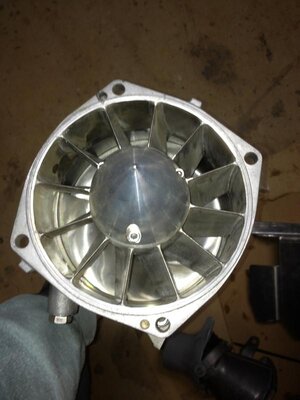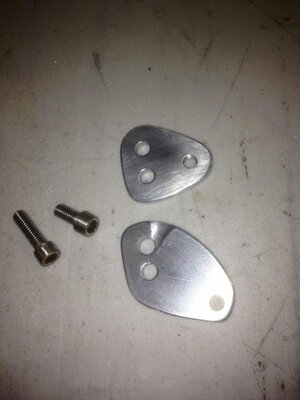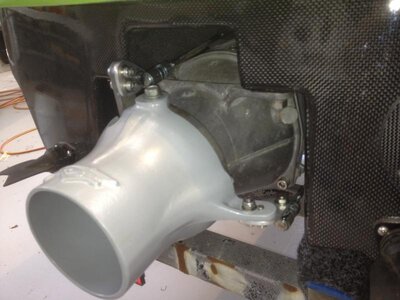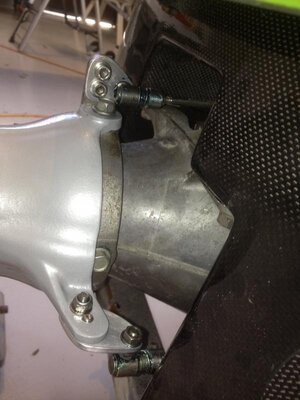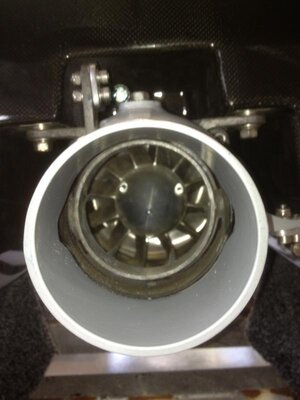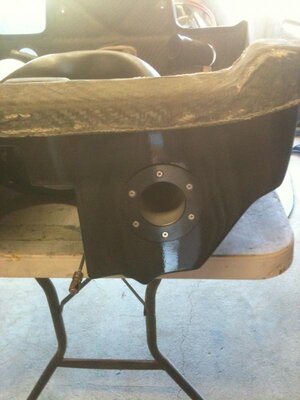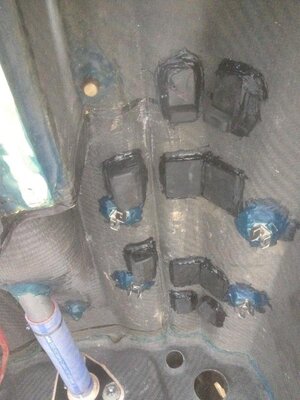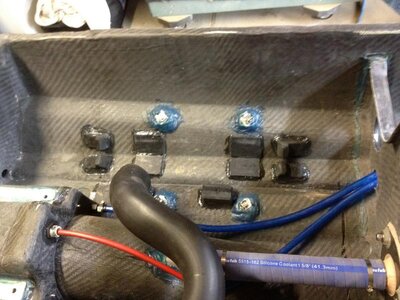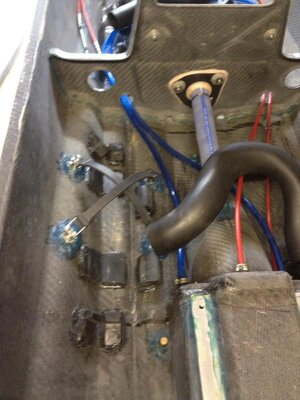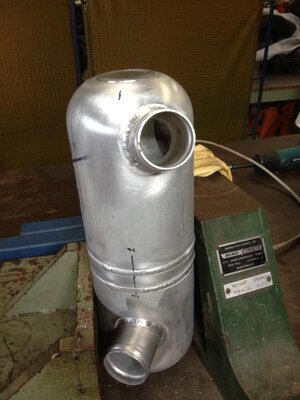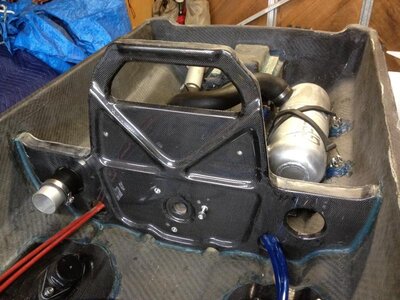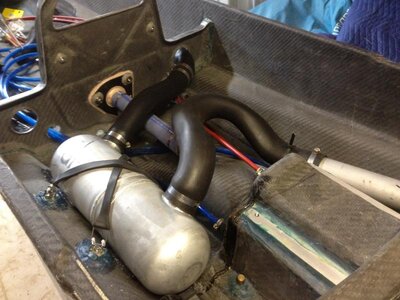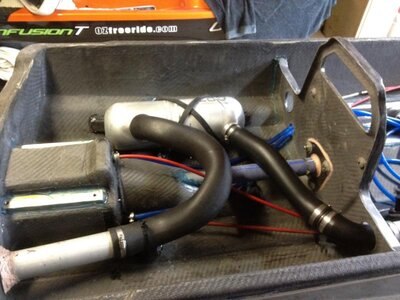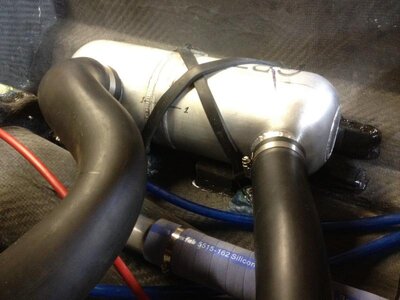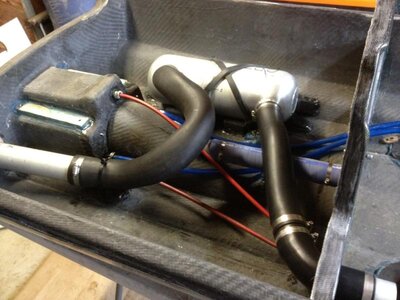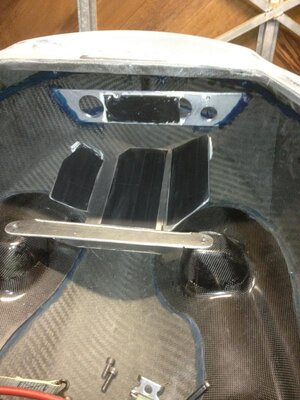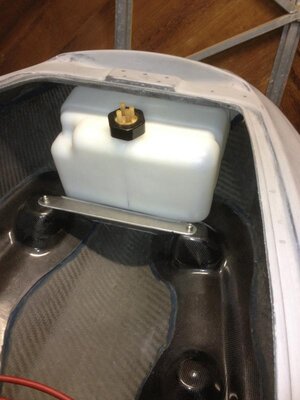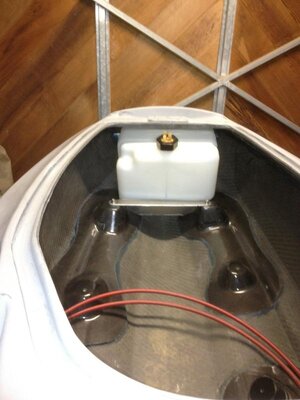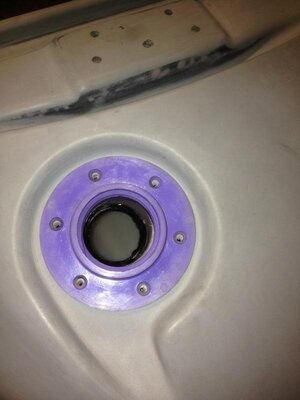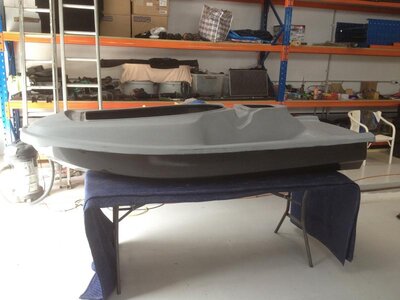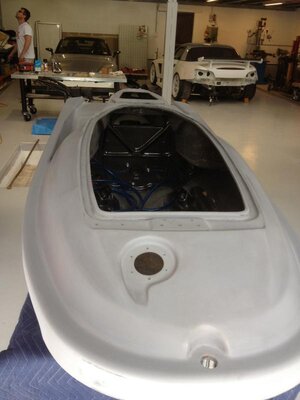



The Power Factor Pipe was the only way to get the full potential from the big Dasa motor, but that also meant the the pipe had to sit right where the oem fuel tank is mounted.
Most standup guys use a go kart tank that sits between the pipe & the flywheel cover which is normally 8 - 9 litres.
We wanted to use 2 fuel tanks on the blaster as it would be a pain in the arse to have to keep re-fueling every 15mins with just a go kart tank & wanted to achieve similar capacity as the oem tank.
We searched around for many different shaped tanks untill we finally found a tank that came close to fitting in the front of the hull.
The front tank would take much work to design a mount that would hold it on the right angle as to clear fuel pickups, top deck, etc. The other problem was designing a mount that would secure it firmly & still have the ability to remove the tank after the topdeck was bonded to the hull, many of the designs we came up with worked great, but didn't allow you clearance to remove the tank.
We kept the carbon fuel tank mounts that were to hold the oem blaster tank as we could see that we could use these 4 mount points for the front fuel tank bracket & as a mounting point for the Power Factor Pipe.
A small part of the carbon fuel tank front mounts were machined into to allow for the front fuel tank clearance & bracket removal.
Another problem we had was filling the front tank, the only option to us was to use the oem external filler cap.
The first 2 pics show the mount in it's early stages, it was a couple of days of work of rejects just to get to this stage.
The pics of the tank shows the original filler cut off, a plastic plate welded in, then the filler re-positioned & welded as to match up with the oem filler cap in the topdeck.
A silicone hose is clamped between the tank & the oem filler cap neck in the topdeck.

